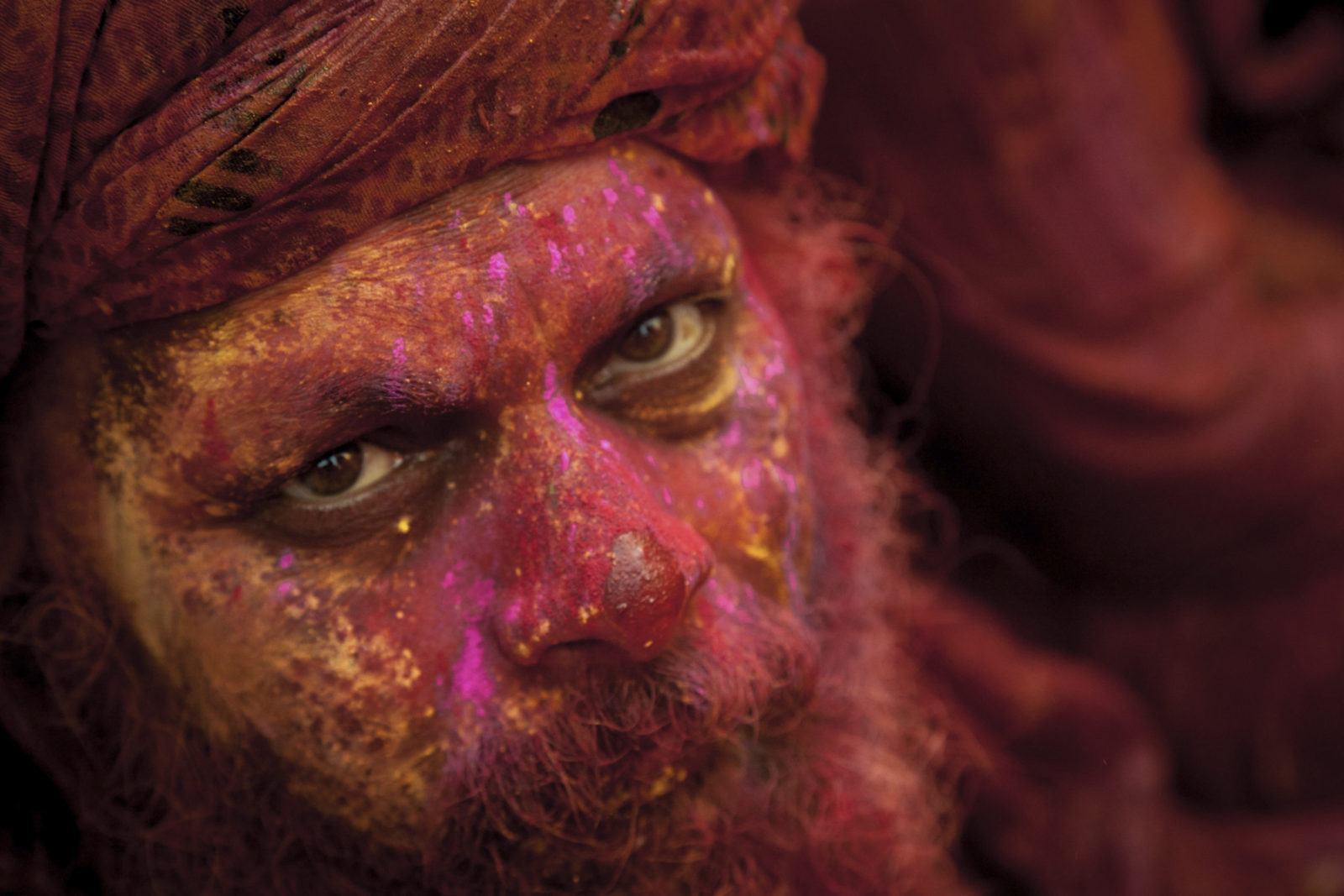
I should have trusted the unpredictable weather forecast for once. The torrential rains that lashed all day had transformed into a mad thunderstorm by night. I lay staring at the ceiling fan above my head, trying hard to be oblivious to the commotion outside. It was 11.30 pm; I looked outside the window of my room, only to find a street buzzing with honking vehicles and desperate devotees trying to seek shelter from the rain. My trip was heading towards a disaster..
The arrival :
We had arrived at Pamban the day before, to witness an engineering marvel- the Pamban Bridge. The 2 km long meter gauge rail bridge and the road bridge built over the Park Strait run parallel to each other, connecting Pamban Islands to the mainlands of Tamilnadu. The rail bridge that was built in 1914 has a separable central section that opens up to let huge vessels pass under. This hundred year old was proclaimed as India’s oldest and longest sea bridge, until the Worli sea link bridge of Mumbai took over the title a few years ago. We waited in the fast rains and blowing winds just to get a glimpse of a train passing over the turquoise blue Park Strait that shivered underneath.




Rameswaram
Upon reaching Rameswaram, we barged into “Sri Kashi Mutt” that offered a simple and affordable stay, adjacent to the famous Ramanathaswamy Temple. The mammoth corridor lined with stone pillars bearing beckoning sculptures of humans, animals and demons is the the longest temple corridor in the world! The temple still preserves its ancient aesthetics to a considerable extent, but the current dark and humid atmosphere within may be unappealing to the impious. Walking through it is an experience one cannot miss while in Rameswaram. Sadly, photography is prohibited.
Kunthakal
We dropped the plans to visit Dhanushkodi due to the cloudburst. Instead, we hired an auto and headed to Kunthukal, 14 kms off Rameswaram. The memorial of Swami Vivekanada stood in solace at one corner of the beach. It is said that the great monk had set his foot here when he first arrived in India. A little further, a small path opened up to a vast and stunning beach that welcomed us with open arms! We wandered on the endless shoreline of white sands that complimented the emerald blue sea. We reached a point beyond which the sea curved inwards, forming an estuary cutting us from shore that continued on the other side. With not a soul around, Kunthakal seemed to be a perfect get away from the chaos of Rameswaram. Grey clouds that had gathered towards the horizon moved hastily towards us. Drenching in thick droplets of rain we returned to where our auto waited, enjoying every moment of our idiocy.

A tumbler of steamy hot filter coffee was a relief from the drench when we returned to Rameswaram. Most of the crowd that had visited the temple on account of ‘Adi Amavasya’ had retired post their holy dip in the sacred ‘Teerthams’, but had left Rameswaram in a pitiful state. Heaps of perishable plates and leftovers of the ‘prasadam’ recklessly thrown on the streets were being feasted on by dogs and cows amidst heavy showers that continued through the night..
The fateful morning
We woke up before dawn and walked to the bus stop in light drizzle, unsure if the first bus had already departed. A jeep agreed to drop us at Dhanushkodi after a few minutes of hard bargaining. We were just in time to catch the sunrise until the jeep ran out of fuel and wobbled to a stop, a little ahead. Following a few unsuccessful attempts to restart the jeep, we alighted in the middle of nowhere. It was a panicky situation to be stranded on a secluded road in pitch darkness with not a vehicle in sight! My throat felt parched. A faint strip of light shone below the thick layer of dark clouds at the horizon. Sunrise was exactly half an hour away and we had to cover 4kms! While we walked with hurried steps, a minibus stopped by and dropped us at the entry point of Dhanushkodi where a new drama awaited us.
As per the blogs that I had read, I was supposed to take a jeep from the Dhanushkodi stop, but to my dismay, I couldn’t find any vehicle apart from a few tempo travellers. My frustration mounted when the locals told me that the plying of jeeps was stopped last year. The tempo traveler refused to accept anything less than INR 2500 to drop us to the ruins just about 3 kms away. Alternatively, he needed 16 people for pooling. There was no way to find 16 people at this odd hour! Just then, I saw a gang of ten boys and girls who instantly agreed to join. Two couples showed up from somewhere and in the next minute, our tempo was riding through the bumpy sands! My plan of witnessing the sunrise at land’s end had gone for a toss though. The tempo halted inside Dhaushkodi village. I tried to ‘fix’ the driver by paying him some extra bucks to take us all the way to land’s end. I put my best persuasive skills at work, but the driver did not budge. Seemed that the government had imposed a strict ban on vehicles from going beyond the point where we alighted. My face dropped. After fighting all odds and coming this far, there was no way I was going back!
The catastrophic past of the Ghost Town
Dhanushkodi lies in the south-eastern tip of Tamilnadu, just 18 kms away from Srilanka. Dhanushkodi is known for its disastrous past. On the unfortunate night of 22nd December 1964, a heavy cyclone destroyed the entire town, taking around 1800 lives. It washed away an entire passenger train with around 100 people who were travelling to Dhanushkodi that night, killing everyone on board. The town that comprised of a railway track, houses, a post office, a school, a hospital, port offices and a church was completely dilapidated but was never restored as the government declared Dhanushkodi unfit for civilisation. Barring the spooky ruins and a few fishermen families, Dhanushkodi is totally deserted and hence is referred to as Ghost Town.
The miracle
I head to one of the shacks and settled for a plate of Idli with some tea, looking at the church that stood on the other side of a wide road with wishful eyes. Suddenly, a faint shaft of light touched the cross on the top of the church! While I ran to the other end of the road with my camera, sunlight ripped the clouds and illuminated the church and its surroundings. The white sand and the wet tar road shimmered. The skies had cleared and the clouds had now amassed miles behind the church. I stood in disbelief trying to comprehend the miracle which was beyond my thinking capabilities!


I was disappointed to know from the locals that the adventurous 4-km sand bed was converted into a 200-feet wide tar road six months ago. Well, the last lap was supposed to be the crux of my trip! We decided to walk the road, if not the sand. Just as we started, a huge stone-carrier truck passed by. We got dropped 2 kms before the end point!
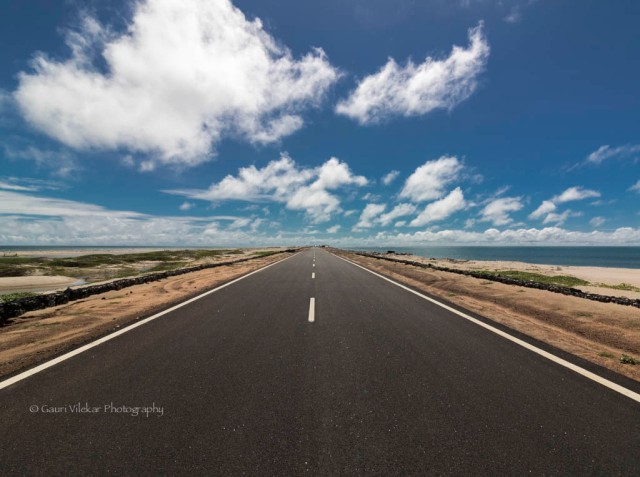
The sun was hitting hard and sweat dripped under our clothes as we plodded on the jet black, super-smooth roadway that was complimented by white sands on either sides. Huge boulders were being placed by mammoth trucks on the sand bed to keep the ocean at bay. A stupendous view of 2 oceans running parallel to each other made my jaws to drop! To my left was the silent Bay of Bengal, to my right was the roaring Indian Ocean and in front of me, was the Ram Sethu point. The topography blew me off my feet!

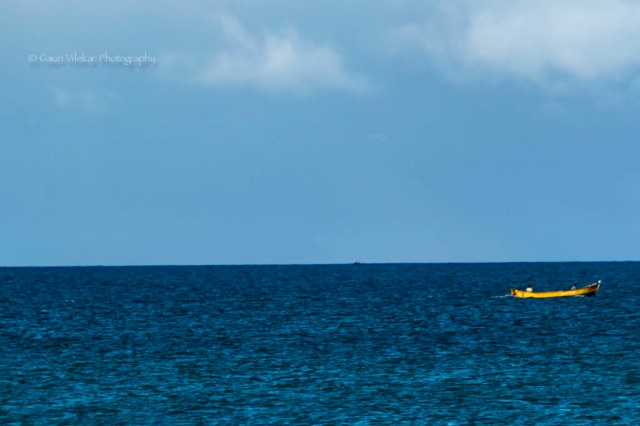
Ram Sethu
As per Ramayana, legend has it that upon Lord Rama’s instructions, the Vanar Sena (Monkey Clan) built a bridge from this point all the way upto Lanka to rescue Sita from the evil clutches of Ravana. It is believed that the boulders had “Rama” inscribed on them and thus floated on the sea, creating a floating bridge. Interestingly, the facts mentioned in Ramayana about the location of the bridge exactly matches its current geograhical position! Temple records say that Rama’s Bridge was completely above sea level until it broke in a cyclone in AD 1480.
Walking 2 kms in the scorching sun was indeed tough, but the views were worth the effort. The tar road which was around 2 feet higher than the land ended with 2 slits at either ends. From here, one can walk down the stairs onto the sand bed that merges into the ocean a few meters away. I ran from the right side to the left and let the cool waters of the Indian Ocean and Bay of Bengal kiss my feet in turns. Miles away, hundreds of river terns sat on a thin stretch of sand, fishing generously in the deep blue sea. The feeling of being surrounded by nothing but two limitless oceans is indescribable. The uninhibited landscape of Dhanushkodi was spectacular beyond imagination.




Spectacular views from Ram Sethu


After basking in the euphoria for an hour, it was time to return. The sun burnt our backs while the road created mirages ahead of us. We hitch-hiked with a family in their car half way through and returned to Rameswaram.
We had enough time left in hand before we could head back to Madurai to board our night train to Bangalore. So Kushi beach was next on cards. Seeing unusual crowd on the beach, we fled. Instead, we randomly decided to tread along the coast line in the shade of casuarina trees to destination ‘nowhere’. After 3 kms, we hit Pirappan Valasai, a beautiful virgin beach hidden miles away from the eyes of hungry tourists. We exited on a small path that was lined with beetle nut and palm trees on both sides. From a distance, the contrast created by the blue sea and the lush green trees looked gorgeous.
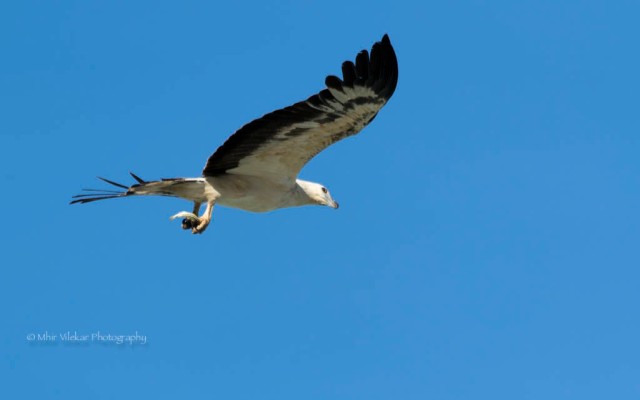

Dhanushkodi had been one heck of a trip that started off with a series of disasters but eventually mutated into a prodigy. It had taught me a valuable lesson. The best of planing can be overturned by the forces of the universe, whether travel or life. But miracles do happen if you believe in them!
Birdlife at a glance
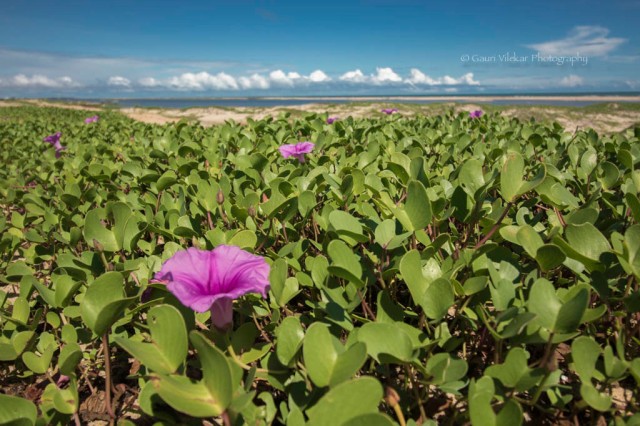

Snippets :
How to reach : Train to Madurai. Bus from Madurai to Rameswaram. Jeep /Bus/Hitchhiking to Dhanushkodi
Best time : December-January. Checking weather forecast is mandatory as this is a cyclone prone area.
Where to Stay : Rameswaram has lodges and Mutts in plenty
What to eat : Simple veg food on banana leaf. Filter coffee
What else to do : Visit Ramanathaswamy temple and Pamban bridge. Stroll on Kunthakal beach. Walk through the coast line from Kushi beach to Pirappan Valasai or beyond!
What to carry : loads of sunscreen and full hand cotton clothes. Its gets extremely hot due to proximity to the equator.
